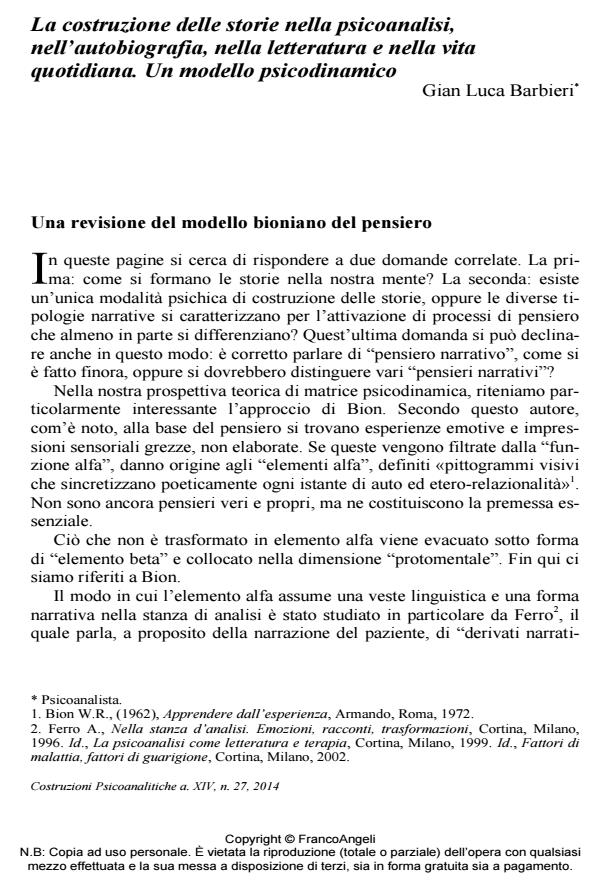La costruzione delle storie nella psicoanalisi, nell’autobiografia, nella letteratura e nella vita quotidiana. Un modello psicodinamico
Journal title COSTRUZIONI PSICOANALITICHE
Author/s Gian Luca Barbieri
Publishing Year 2014 Issue 2014/27
Language Italian Pages 20 P. 73-92 File size 259 KB
DOI 10.3280/COST2014-027006
DOI is like a bar code for intellectual property: to have more infomation
click here
Below, you can see the article first page
If you want to buy this article in PDF format, you can do it, following the instructions to buy download credits

FrancoAngeli is member of Publishers International Linking Association, Inc (PILA), a not-for-profit association which run the CrossRef service enabling links to and from online scholarly content.
The author studies the constructions of the stories through the revision and the integration of Bion’s theory of thought. In particular, he notices that there are two different structures of tales in the narrative thought, which is the same in every narrative situation. The first structure is typical of psychoanalysis; the second of the extra-analytic contexts. This last one includes different narrative types: literature, autobiography and daily tales. Every model is different from the others for the participation of personal unconscious, the pursued goals, the pragmatic context, the setting, the knowledge and the care of the self.
Keywords: Story, psychoanalysis, literature, autobiography, Bion
- Imagination in narrative medicine Gian Luca Barbieri, Sara Bennati, Stefano Capretto, Barbara Ghinelli, Corrado Vecchi, in Journal of Child Health Care /2016 pp.419
DOI: 10.1177/1367493515625134 - The trans-autobiographical writing in the psychiatric context Gian Luca Barbieri, Alessandro Musetti, in Journal of Poetry Therapy /2018 pp.173
DOI: 10.1080/08893675.2018.1467819
Gian Luca Barbieri, La costruzione delle storie nella psicoanalisi, nell’autobiografia, nella letteratura e nella vita quotidiana. Un modello psicodinamico in "COSTRUZIONI PSICOANALITICHE" 27/2014, pp 73-92, DOI: 10.3280/COST2014-027006